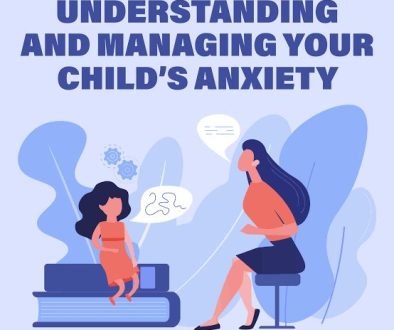The Role of Therapy in Building Emotional Resilience
Emotional resilience is the ability to adapt and bounce back from stress, adversity, or trauma. It’s a crucial aspect of mental well-being, allowing individuals to navigate life’s challenges while maintaining a sense of balance and control. Therapy plays a vital role in helping people develop this resilience, equipping them with the tools to handle emotional stressors and recover from difficult experiences.
What Is Emotional Resilience?
Emotional resilience doesn’t mean avoiding stress or never experiencing negative emotions. Instead, it refers to a person’s ability to process emotions healthily, learn from challenges, and move forward without being overwhelmed. Emotionally resilient individuals can:
– Adapt to change with greater ease.
– Recover more quickly from emotional setbacks.
– Maintain a positive outlook despite adversity.
– Develop a sense of agency over their emotions and reactions.
While some people may naturally be more resilient than others, resilience is a skill that can be developed and strengthened, and therapy is one of the most effective tools to help foster this ability.
How Therapy Helps Build Emotional Resilience
1. Developing Coping Mechanisms: Therapy provides individuals with practical coping mechanisms that can be applied in stressful situations. Techniques such as cognitive-behavioral therapy (CBT) help individuals reframe negative thoughts and behaviors, making it easier to manage stress and emotional pain. These strategies give people a toolkit to draw from when facing difficult emotions or circumstances.
2. Understanding and Regulating Emotions: Many individuals struggle with identifying and regulating their emotions. In therapy, clients learn how to recognize and name their feelings, which is the first step toward managing them. This increased emotional awareness allows people to respond to their emotions in healthier, more productive ways rather than reacting impulsively or suppressing their feelings.
3. Building Self-Esteem and Confidence: Therapy helps individuals work through insecurities and self-doubt that may undermine their resilience. By addressing negative self-perceptions and building a stronger sense of self-worth, individuals can approach challenges with greater confidence. This self-assuredness makes it easier to face adversity without becoming emotionally overwhelmed.
4. Creating a Supportive Relationship: The therapeutic relationship between client and therapist is, in itself, a powerful tool for building resilience. A therapist provides a non-judgmental, supportive space where clients can explore their emotions and experiences without fear of criticism. This sense of being heard and understood helps clients feel validated, which can improve emotional stability.
5. Processing Trauma and Past Experiences: Unresolved trauma can significantly hinder emotional resilience, making it harder for individuals to cope with current or future stressors. Therapy allows individuals to process past trauma in a safe and controlled environment, helping them understand its impact and develop healthier ways to respond to emotional triggers.
6. Learning Problem-Solving Skills: Resilience is not only about managing emotions but also about practical problem-solving. Therapy helps individuals break down challenges into manageable parts and develop effective solutions. This problem-solving approach reduces feelings of helplessness and empowers individuals to take control of their circumstances.
7.Creating Healthy Boundaries: Therapy teaches individuals the importance of setting and maintaining boundaries, which is essential for emotional resilience. By learning how to protect their mental and emotional energy, individuals become better equipped to handle stress and avoid burnout. Healthy boundaries help prevent emotional exhaustion and allow people to prioritize their own well-being.
Types of Therapy That Promote Emotional Resilience
Several therapeutic approaches are particularly effective in building emotional resilience:
–Cognitive-Behavioral Therapy (CBT): Focuses on changing negative thought patterns and behaviors to promote healthier emotional responses and problem-solving strategies.
–Dialectical Behavior Therapy (DBT): Combines mindfulness and cognitive techniques to help individuals manage intense emotions and improve relationships.
–Mindfulness-Based Therapy: Encourages individuals to stay present and develop an awareness of their thoughts and feelings without judgment, reducing emotional reactivity.
–Trauma-Focused Therapy: Helps individuals process and heal from traumatic experiences, which can hinder emotional resilience.
–Solution-Focused Therapy: Concentrates on building practical solutions and focusing on strengths, empowering individuals to take proactive steps toward resilience.
The Long-Term Benefits of Therapy for Emotional Resilience
–Increased Adaptability: Therapy teaches individuals how to adapt to change more effectively, making it easier to handle life’s inevitable uncertainties.
–Improved Relationships: Emotional resilience improves communication and conflict resolution skills, leading to healthier and more supportive relationships.
–Reduced Risk of Mental Health Issues: By building emotional resilience, individuals are better equipped to handle stress without developing anxiety, depression, or other mental health issues.
–Greater Emotional Stability: Resilient individuals tend to experience fewer emotional highs and lows, resulting in a more stable and balanced emotional life.
In conclusion
Therapy is a powerful tool for building emotional resilience, helping individuals develop the skills and strategies needed to navigate life’s challenges with confidence and strength. By providing coping mechanisms, emotional awareness, and a supportive environment, therapy empowers people to recover from setbacks and thrive in the face of adversity. Emotional resilience is not an innate trait but a skill that can be nurtured and strengthened, and therapy is one of the most effective ways to achieve it.



